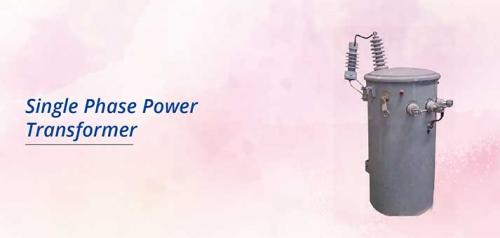What Are The Basic Elements Of A Transformer? And What Are Their Functions?

I have a friend who is an expert in the study of the transformer, recently, he is working on an efficiency-focused single phase transformer for commercial purposes. I talked to him about the composition of a transformer and what purpose it has to serve. This article contains insight from that conversation and researched bits.
1. Breather
The use of Breather is focused on regulating the level of moisture in the transformer. The breather is comprised of by a balancing system of atmospheric pressure which controls the overall pressure changes in the transformer which arrive from the temperature changes of the insulating oils in the transformer. In the simplest example, a Breather resembles the functionality of an air filter for the transformer.
2. Buchholz Relay
Transformers is vulnerable to faults, to counter these untimely flaws, Buchholz relay is located over the f connecting the pipe from the main tank to the oil conservator tank of the transformer. Buchholz relay is primarily helpful against the internal faults of the transformer. The nature of the transformer, for instance, a single phase step-up transformer can vary the Buchholz relay from a single phase step down transformer.
3. Cooling Tubes
The insulating oil in the transformer can heat up with the increase in temperature, it is important to regulate the heat levels, as a solution, cooling tubes are used in the transformers. Cooling tubes facilitate the flow of transformer oil, it can be either forced or natural depending upon the composition and requirements of the transformer.
4. Explosion Vent
In some cases, the transformers are susceptible to heavy internal faults which can cause severe damage. To provide safety against such heavy internal faults, an explosion vent is provided in the transformers which can remove the boiling oil from the transformer in such cases. An explosion vent is located above the level of the oil conservatory tank for better and secure expulsion of boiling oil during any heavy internal faults.
5. Insulating Materials
To separate the primary windings from the secondary windings, insulating materials such as paper and cardboard are used. Insulating materials act as a barrier between these two windings to prevent the loss of heat and any bar any energy contact between these two.
6. Laminated Core
Literally, the core is the kernel of the entire transformer. Composed of the laminate iron core, it's nature is contingent upon crucial factors namely voltage, current, and frequency which is determinant in providing the right core structure for best and safe outputs. For example, a 30 kva single phase transformer will have a different laminated core than a 150 kva transformer. The core has various purposes to serve viz.
Its composition is helpful in reducing the eddy currents and likewise managing the Hysteresis loss.
Provides aid to the windings in the transformer.
For the flow of magnetic flux, it facilitates a low reluctance path.
7. Oil conservator
Directly connected to the main tank inside the transformer, the oil conservator is used to provide protection against the loss of oil. To make sure that the changes in temperature are allowed room for, the positioning of oil in the conservator is around the mark of the middle, this allows for expansion and contraction of the oil.
8. Tap Changer
Transformer showcase varying levels of voltage mainly dependent upon the input value of voltage and the load, to make sure that these levels are maintained with efficiency, a tap changer is included in the transformer. Tap changers are available in mainly three forms, namely, on-load, off-load, and automatic tap changers. Automatic tap changers do not manual connection and disconnection with the change in voltage like the on-load and off-load tap changers.
9. Transformer Oil
Transformer oil is an insulating material which covers the core and windings of the transformer. This oil prevents heat loss and also cools the core and coil assembly of the transformer. The type of transformers such as single phase power transformer and dry type transformer can affect om the requirements of the transformer oil.
10. Windings
Usually composed of Copper metal, windings are provided in a set of two. The composition of these windings from copper is beneficial because copper has high conductivity and high ductility which minimizes the energy loss and decreases the volume of copper required, respectively. These windings are primary when the input voltage is concerned and for output voltage, secondary windings are used.
Post Your Ad Here
Comments